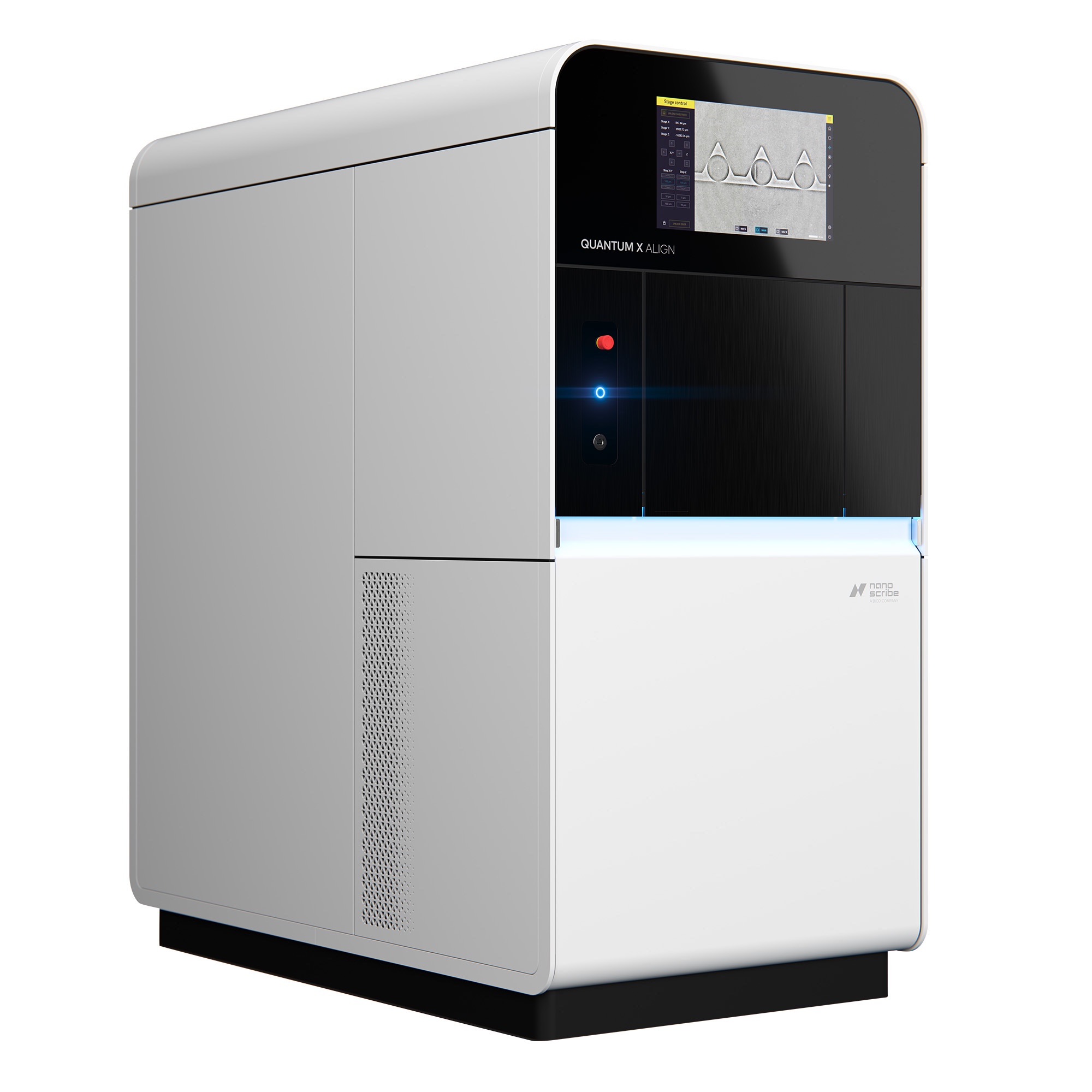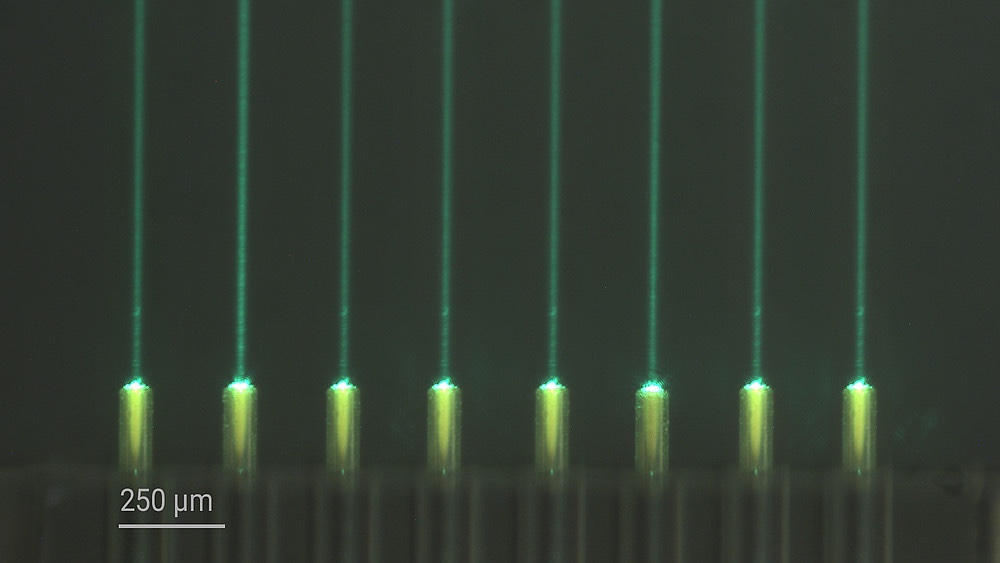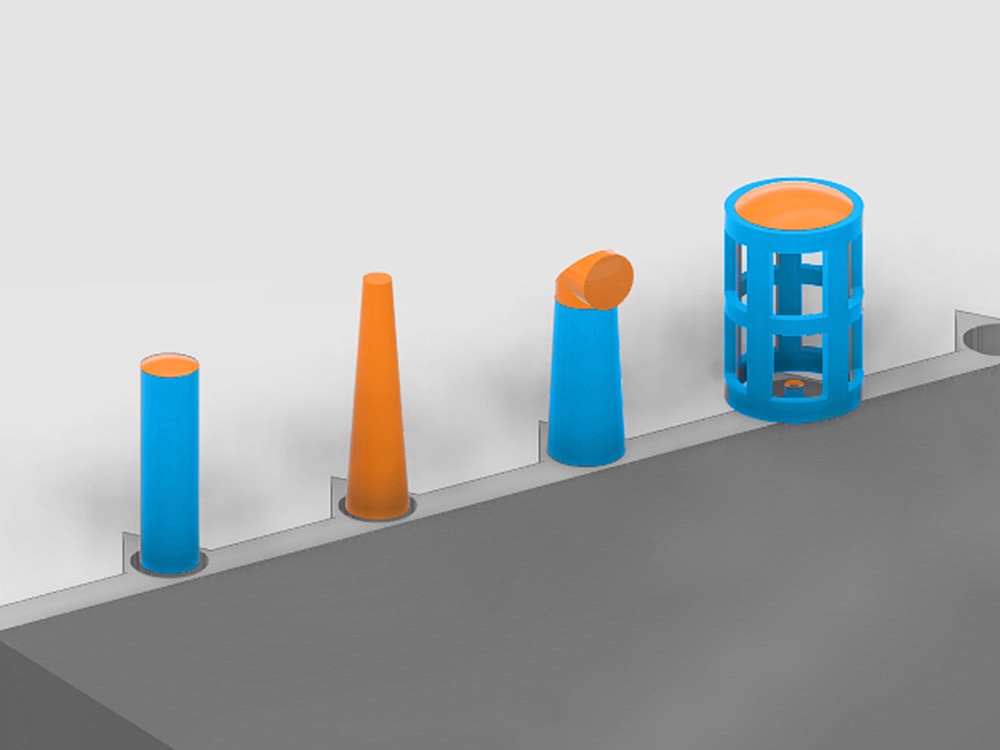Quantum computing may get a boost from 3D printing via Nanoscribe, a subsidiary of Swedish-based bioconvergence startup BICO (BICO.ST). At this year’s Photonics West Exhibition (January 25-27), Nanoscribe is unveiling the Quantum X align, a 3D printer specifically designed for auto-aligned printing on optical fibers and photonic chips.
Not to be confused with quantum computing itself, the Quantum X line of products launched in 2019 is a micro 3D printing platform. More recently, Nanoscribe has released multiple versions of the machine, tailored for a variety of specific applications. These include the Quantum X shape, announced last fall, and designed for life sciences applications (particularly microfluidics). Then there was the Quantum X bio, announced last December. This system is intended for use in bioprinting, a primary focus of most BICO-related entities.

The latest addition to the Quantum X series, the align, has been engineered precisely for applications in the photonics field, which has particular relevance for the quantum computing industry. One of the most significant differences between quantum and classical computing has to do with the chips involved in building the respective systems. While quantum computers can be and are constructed using conventional electronic integrated circuits (“microchips”), much research into the quantum field — especially during the mini-boom quantum computing has undergone in the past few years — centers around exploring the viability of photonic integrated circuits (PICs).

PICs are based on a similar premise to traditional microchips. Photonic computing has been discussed for years as a basis for classical computing and most serious quantum computers aren’t photonic computers. However, the Quantum X align could be a notable development, not only for the quantum computing industry, but for 3D printing, as well.
In a press statement about the rollout of the company’s latest machine, Nanoscribe’s CEO and co-founder, Martin Hermatschweiler, commented, “With the addition of the new Quantum X align to our industry-proven Quantum X platform, we are enriching Two-Photon Polymerization with powerful alignment technologies that drive the ever-increasing demand in data communications, telecommunications and sensing applications. Our goal is to address the challenges of efficient coupling in photonic packaging and make high-precision 3D printing the technology of choice in integrated photonics.”
“Alignment” here refers to the need for every tiny element on a PIC to be situated with as tight precision as possible. Any minuscule irregularity in the placement of the optical lens on the chip can lead to disproportionately large processing errors. Usually, this consideration is dealt with via a technique known as active alignment, which entails centering shims onto a chip, then replacing the shims with the lenses, and finally using an adhesive to lock the lens in place, once it’s been properly located.
Active alignment is extremely expensive and time-consuming. The align, on the other hand, deploys the other major method for centering and tilting lenses on microchips, the use of imaging modules to print focusing optics directly onto the optical fibers of each chip: hence the name, “automatic alignment”.

This represents a perfect example of the unique solutions achievable when applying 3D printing to an industrial problem. 3D printing here offers greatly enhanced automation and precision in the production process compared to other methods of achieving the same result.
Additionally, it encapsulates a theme I mention often: the collaborative, interdependent nature between all the various facets of “Industry 4.0”. This is a theme which BICO Group seems to grasp as well as any other company on the market. Moreover, not only is the company correct to suggest that the align could increase efficiency in the production of PICs for quantum computing purposes. It could also help achieve sufficient accuracy to eventually make quantum computing scalable, which, at present, is the major objective for those in the industry serious about commercializing the technology.
Images courtesy of Nanoscribe
Subscribe to Our Email Newsletter
Stay up-to-date on all the latest news from the 3D printing industry and receive information and offers from third party vendors.
You May Also Like
3D Printing Financials: Protolabs’ Q1 3D Printing Revenue is Flat, Company Advances in Technology Push
Protolabs (NYSE: PRLB) has kicked off 2024 with a mild boost in revenue, revealing how the Minnesota-based company manages to adapt and thrive even in uncertain market conditions. While the...
NASA Backs Project for 3D Printing Space Sensors
NASA granted $300,000 to Florida State University (FSU) and Florida Agricultural and Mechanical University (FAMU) to pioneer a project using 3D printing to develop cutting-edge sensors capable of withstanding the...
Further Understanding of 3D Printing Design at ADDITIV Design World
ADDITIV is back once again! This time, the virtual platform for additive manufacturing will be holding the first-ever edition of ADDITIV Design World on May 23rd from 9:00 AM –...
Daring AM: Rocket Lab Shoots for the Stars, Astrobotic Wants to 3D Print on the Moon
Once again, space exploration teams up with the 3D printing industry, launching projects that could change how we explore space. Pioneering space manufacturer Rocket Lab (Nasdaq: RKLB) secured a $14.49...

































